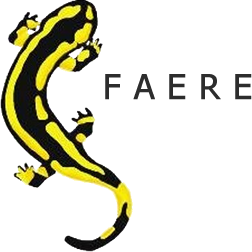2024
2024.09 A local versus global descriptive social norm: A DCE applied to waste sorting behavior in Phnom Penh, Cambodia
Lucie Point – Pierre-Alexandre Mahieu
Abstract
Previous literature has widely explored the influence of descriptive social norms on individuals’ pro-environmental behavior. However, despite a growing interest in the subject, the role of geographical proximity of the reference group remains unclear. Our study seeks to fill this gap by investigating the impact of a descriptive social norm at two scales: local (neighborhood), and global (city). In this aim, we incorporate descriptive norms as attributes in a discrete choice survey. Our findings reveal that only the local social norm exerts a significant influence on organic waste sorting behavior, while the global social norm does not show a significant effect at conventional statistical levels. These results highlight the importance of considering the geographical proximity of the reference group when studying descriptive social norms. The policy implications of these findings are discussed.
2024.08 The dynamics of fertility under environmental concerns
Paolo Melindi-Ghidi –Thomas Seegmuller
Abstract
2024.07 Revisiting the resource curse: Does volatility matter?
Yassine Kirat
Abstract
2024.06 Les déterminants des distances domicile-travail : cas des aires urbaines françaises métropolitaines
Romain Gaté – Mohamed Hilal
Abstract
2024.05 Does the the EU-ETS affect the firm’s capital structure? Evidence from French manufacturing firms
Pascale Combes Motel – Aimé Okoko – Sonia Schwartz
Abstract
2024.04 Urban Foodprint and Mitigation Strategies: A Theoretical Analysis
Anne Fournier
Abstract
Feeding the expanding global population while reducing the environmental impact of farming
and food supply is among the main challenges of the century. Cities, which host the large majority
of the past decade demographic growth, are at the forefront. They are increasingly considering the
relevance of developing policies to explicitly support less-intensive production and/or rebuild their
foodshed so as to reduce their reliance on long-distance food transport. In this paper, we develop
a spatial theoretical model to describe and discuss both economic and environmental implications
of farming practices change and relocation strategies. We highlight that, compared to the market
outcome, promoting less-intensive and local farming may improve the welfare provided that the
marginal opportunity cost of urban land remains low enough. However, we also show that the
conversion from conventional to alternative farming does not necessarily reduce GHG emissions
and may, as a consequence, offset the positive effect on welfare. We finally conduct numerical
simulations so as to illustrate the ambiguous impacts of food relocation.
2024.03 Waste Trading System: managing waste with high population density and low sorting rate
Julie Metta – Coline Metta-Versmessen -Valeria Alvarado
Abstract
Landfilling notoriously has environmental impacts, adversely affecting air, soil and water. It therefore represents a waste management strategy of last resort, and reducing the landfilling rate is essential to mitigating these externalities. Nevertheless, deploying
this potential is difficult in the absence of citizen participation in sorting. To correct for these negative externalities and market failure, contemporary policy discussions so far mainly focus on taxation and thus largely overlook market-based solutions. In this
study, we first discuss the conditions favouring the effectiveness of a C&T approach for MSW management. We identify five elements characterizing a C&T system for waste: cap definition, allocation of pollution permits, liquidity and market power, price volatility, and participant compliance; that we further investigate for the implementation of a WTS in large and populated urban areas. We subsequently applied our analysis to the specific case of Hong Kong. We determine the agents concerned, the optimal social cost
of waste, the number of permits for the total period as well as its allocation method, together with the potential market design scenario with regard to the particularities of Hong Kong and its climate regulation in the broad sense.
2024.02 Tax-subsidy schemes for recycling when quantity and quality of waste matter.
Karima Afif – Bocar Samba Ba – Eugénie Joltreau
Abstract
This paper seeks to theoretically understand the impact of a tax-subsidy system (as implemented in Extended Producer Responsibility) on packaging sourcereduction, waste generation, and recycling in the presence of economies of scale
and quality concerns in the recycling industry. We use a static equilibrium and a non-homothetic technology function to study asymmetric substitution between the virgin and the recycled material. The model displays a trade-off between recycled content and material productivity, and between waste generation and the recycling industry’s profitability. A tax-subsidy scheme in the form of an excise charge and a dual subsidy restores the social optimum, providing that the recycler reaches a positive profit. We find that the excise tax favors virgin material and packaging refinement, all else equal. At the same time, it decreases the use of recycled material, sales, and total waste generation. The subsidy granted to the producer has the opposite effect. The subsidy granted to the recycler increases its profit and the recycling rate.
2024.01 Local label and sustainable labels: a source of consumer confusion? An applied study on the sud region.
Charles Bee-Leroux – Dorothée Brécard -Frédéric Aprahamian
Abstract
The aim of this paper is to investigate the effect of introducing a local label on consumers’ preferences for sustainable labels. The recent literature shows the interest of firms and consumers for labelling schemes. This success is a proof of the increasing sensitivity of consumers to the sustainable market. The other side of the coin is the proliferation of labels which generates confusion in consumers’ choices and leads to mistrust, reducing the visibility of the quality that labels have to guarantee. Labelling has to be like a milestone that guide consumers in their choices, but the multiplication of labels erases this role. Nevertheless, labelling remains one of the main policy tools for sustainable development, especially in the
agri-food sector, so it is necessary to remain cautious with new labelling project. Using data from a survey of more than 900 seafood consumers in the Region Sud of France, we analyze their preferences between a local label, a health label, an eco-label, and a fair-trade label, using a ranking method. The aim is to understand how the new regional seafood certificate created by the Region Sud might exacerbate consumers’ difficulties in correctly distinguishing between the different labels. Using a rank-ordered model, we show that the “health” label, which remains the preferred label for a large proportion of consumers, is clearly distinguishable from the other three labels. On the other hand, the presence of a local label creates some confusion among consumers with respect to the eco-label and the fair trade label, which it tends to replace. We conclude that the introduction of this new label promoting regional fishing will create more confusion.







